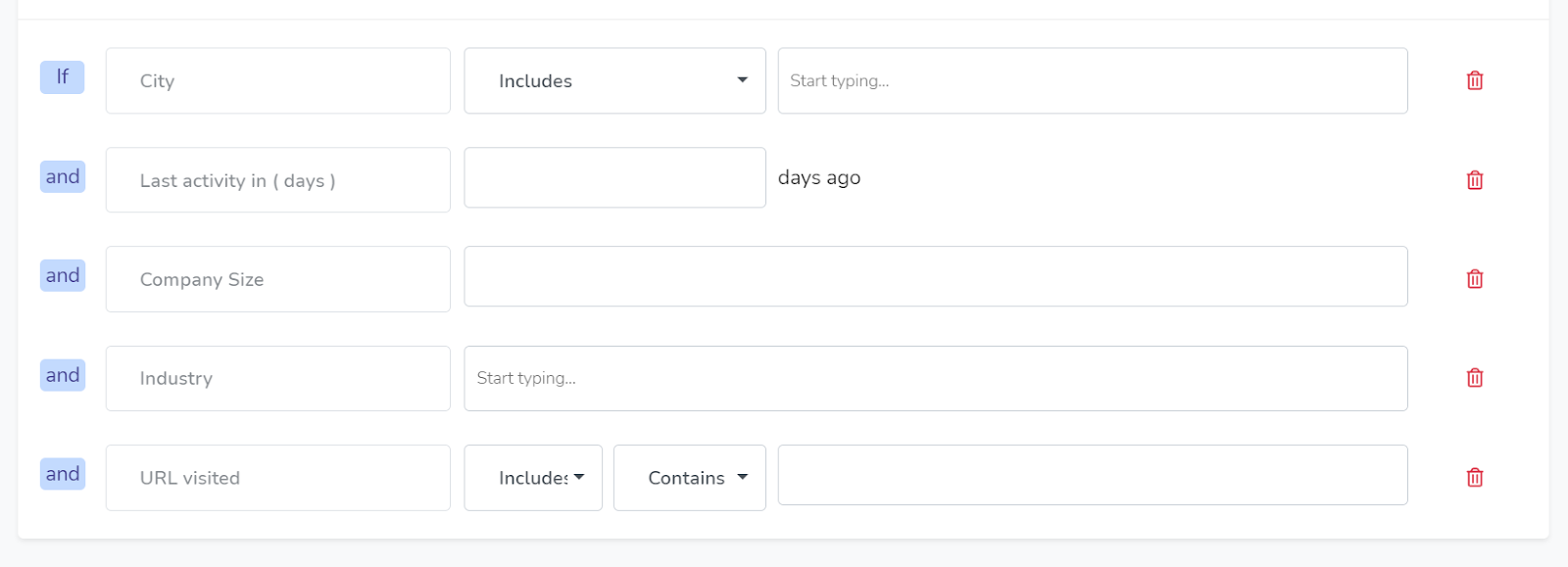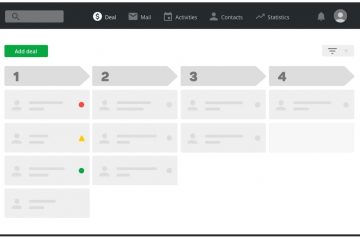Predictive Sales Analytics
Imagine if you were able to predict how your leads will react to your interactions with them in the future. You would know which offers to send and when. You will also know when it is best to back off from trying to sell, and when another interaction like sending useful information would be more productive.
Being able to predict something like this would work wonders for your sales pipeline. It will help you avoid missing out on sales and avoid losing leads by pushing too hard. It will also help you know when to nurture your leads to develop their interest and when to re-engage with them to prevent them from dropping out of your sales funnel altogether. The best part, it will help you know when a particular lead has buying intent and is ready for the sale.
Unfortunately, nobody has a crystal ball and it is all but impossible to be sure of what any individual will do in the future. However, we can get a good idea based on behavioral patterns and past interactions combined with tallying data from interactions of similar customers.
For example, it is reasonable to think that somebody who has shown a lot of interest in one of your products will react favorably to a special offer on that product. With the right information at hand, we can also have a good idea of how particular leads might act to other interactions.
B2B companies around the world are developing increasingly more sophisticated methods of getting to know more about their customers and perceiving the value of prospects as B2B sales take long and such the necessity for prediction is more important.

What is Predictive Sales Analytics?
Predictive sales analytics involves analyzing leads in a database and using that information to predict future behavior. It involves sophisticated software workflows that have advanced algorithms that can turn raw data into proper predictions.
Predictive sales analytics can help to predict customer patterns that would otherwise have been missed. It can help highlight which interactions are likely to be favorable and which are not. And, all of this on any scale.
Leads can also be categorized and segregated. This will help to enhance personalization rather than having to treat individual leads the same as every other lead, regardless of their differences. Offers can also be created that appeal to people in specific categories, making for a much more effective marketing strategy.
Predictive sales analytics can also be integrated with Customer Relationship Management (CRM) systems and other platforms so the information can be leveraged even further. For example, when integrated with a CRM system, automated workflows can be created so leads are interacted with according to each leads’ data.
Sales analytics will not only help you to maximize the use of your existing database, but it will also help you to continue to add to your database with highly qualified leads. It will help you get the information you need to run effective marketing campaigns that can have people interacting with your company for the first time – after which your sales funnel can help guide them towards the sale.
Why Is Predictive Analytics Needed In B2B Sales?
Predictive sales analytics is important for B2B marketing teams because they tend to have a long sales cycle. This means that between the points of the first contact and when the sale is made there are many points in between and leads will need to be treated differently according to which point they are at. Otherwise, you risk losing out on sales opportunities and you might end up losing the lead altogether.
With predictive sales analytics, however, you get a much better idea of just where your leads are in the sales cycle. It can help you to attribute customer value to your leads and this will help you know how to interact with them for maximum effect. Assign a value to a lead and predict their customer journey and it will make the sales process a lot more efficient.
Overall, it can help B2B marketing teams be a lot more effective by driving sales figures upwards.
Data Needed For Predictive Sales Analytics
Before we jump into specific data groups, let’s first connect data with your leads. Your leads need to be qualified with a customer-fit and a behavior-fit model. Both of these models directly tie into predictive analytics and help you forecast purchase intent and suitability.
Customer-Fit
Customer fit occurs when the needs of a customer and a product’s value delivery perfectly align with each other. In simpler words, it is when your product is able to fulfill a customer’s requirements. This is more likely to occur when a lead matches your Ideal Customer Profile. Is a lead more likely to buy if they are from your target industry? Is a lead likely to buy if he/she does not have the necessary decision making power? Does your product/service work for the company type of the lead?
A predictive lead scoring system (like Quality Score on Salespanel) can over time learn the quality of your leads and instantly put a score on leads as soon as they are captured.
To predict customer fit, customer attributes can be dissected into several data points:
Demographic Data
How old are the people most likely to buy from you? What about their gender, their hobbies, their income range, and so on. Predictive sales analytics can use this data to help determine how likely a lead is to react to certain interactions.
Job Role Data
When it comes to B2B marketing in particular, it is important to know details such as the job position of your lead. It is important to know if they are in a position to make decisions, for example, and if their position is relative to your product.
Firmographic Data (Industry, Company Size, etc.)
Firmographic data like company size, company age, industry can contribute to your predictive analytics process. If your services are for small companies, a large enterprise won’t be buying from you. Similarly, if your services are for large enterprises, small companies are unlikely to be a customer-fit.
Behavioral-Fit
Behavioral-fit happens when your leads engage with your product and content and show interest. For example, if a lead is consistently engaging with your product trial or engaging with resource materials, they are more likely to buy.
Also, knowing what people have done in the past helps us to predict how people are likely to perform in the future. A database of leads should have records of past interactions they have had with the company, including how they reacted to sales offers and other interactions. This information, coupled with other statistics, can be very helpful to know how leads are likely to react to future interactions.
Salespanel helps you take gradually segment and qualify leads based on customer-fit and behavioral-fit and predict if a lead is likely to buy and notify sales when they are likely to buy. For behavioral-fit, Salespanel helps you gradually score leads as they engage with you and show behavioral traits. This lets you convert signaling into scientific numbers. Marketing teams create MQL segments and connect fellow team members to the segment. This data is passed on from marketing to sales through real-time CRM data sync. We will discuss the possible use cases in the next section.

What Can Predictive Analytics Helps Sales Achieve?
The information generated by predictive sales analytics can help sales teams close deals more efficiently.
Understand Customer Type and Motivation
Predictive analysis can help your sales team develop an understanding of your leads. It can help you know what type of customer they are and what their motivations are. Equipped with this information, you can then enhance marketing campaigns and offers to make them effective.
Know Customer Value
Predictive sales analytics can also help marketing and sales teams determine a customer’s value. Let’s take an example of a SaaS product. If a lead signs up for the trial of your premium offering, can’t you derive what the deal is worth? Similarly, depending on the type of company and the solutions they are looking for, you can determine deal value in pretty much any industry. Knowing the deal value helps in prioritizing better deals and providing the needed support and assistance in the buying process.
Know if and When Leads are Ready for Sales Calls
If a lead is hot and is not sold to in time – it could easily go cold again. Predictive sales analytics will help let you know that somebody is ready to buy and that you should act at the right time. This could range anything from triggering an automatic sales offer via email to informing a salesperson to give them a call. Knowing when to strike can help generate considerable revenue that might otherwise have been missed out on.
Know How Closely Sales Prospects Match ICP
One of the most important things marketing departments can do is to create an Ideal Customer Profile (ICP). This helps them to develop ways to sell to their target audience and this will obviously be very helpful when it comes to actually making the sale. It also gives a benchmark against which the leads in their database can be compared.
Predictive sales analytics can help a marketing department to know how closely their leads match their ICP. This information can then be used to tailor their marketing efforts to have maximum impact on conversion rates.
Gradually score and qualify your leads
Lead scoring is a method that allows you to determine how qualified your leads are and how they are furthering in the buying process. Scores are determined based on several criteria, such as job role, industry, etc, and whether or not they have performed interactions like signing up for a newsletter, visiting pricing page, watching webinars and demos, etc. The scores are useful in categorizing leads into certain groups and moving them through the sales process.
Know When Someone can be Pushed for Upgrade
Upgrades are a very important source of revenue for many businesses. They are a potential source of revenue in the short term and can also help to increase revenue streams in the long term. However, pushing an existing customer to upgrade could end up backfiring. Get it wrong and you could annoy them, potentially causing irreparable harm to your relationship with them.
Predictive sales analytics will help you to know when your customers have some intent to upgrade. This helps to make it a much safer proposition as they will be more receptive to any approaches you make. Offering upgrades to the right customers can even help to enhance your relationship with them because you have offered them something they are going to need soon. You could also propose a discount at the right time which will elevate them to take the upgrade offer.
Sales Team Gets Prospect Engagement Data
With proper sales analytics, the sales team knows what leads are doing which helps them strike appropriately and connect with their customers. Even when the deal is complete, valuable data can be retrieved from the sales pipeline that will help enhance marketing in the future.
For example, what form of engagement led to the sale? Was it an offer by an automated email and, if so, which specific email was used? When applied to future offers and marketing campaigns, it can help ensure the right buttons are pushed and a sale is made.
Conclusion
Overall, predictive sales analytics can be a very powerful tool in numerous ways. It can help in the short term by boosting sales. It can also help in the long term by ensuring leads are nurtured and building relationships with customers. Considering the clear advantages it will bring, investing in predictive sales analytics is bound to be a profitable one.
Sell more, understand your customers’ journey for free!
Sales and Marketing teams spend millions of dollars to bring visitors to your website. But do you track your customer’s journey? Do you know who buys and why?
Around 8% of your website traffic will sign up on your lead forms. What happens to the other 92% of your traffic? Can you identify your visiting accounts? Can you engage and retarget your qualified visitors even if they are not identified?



